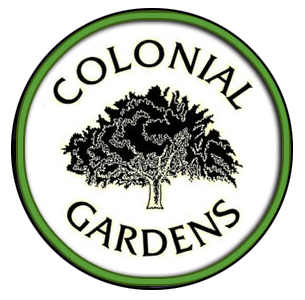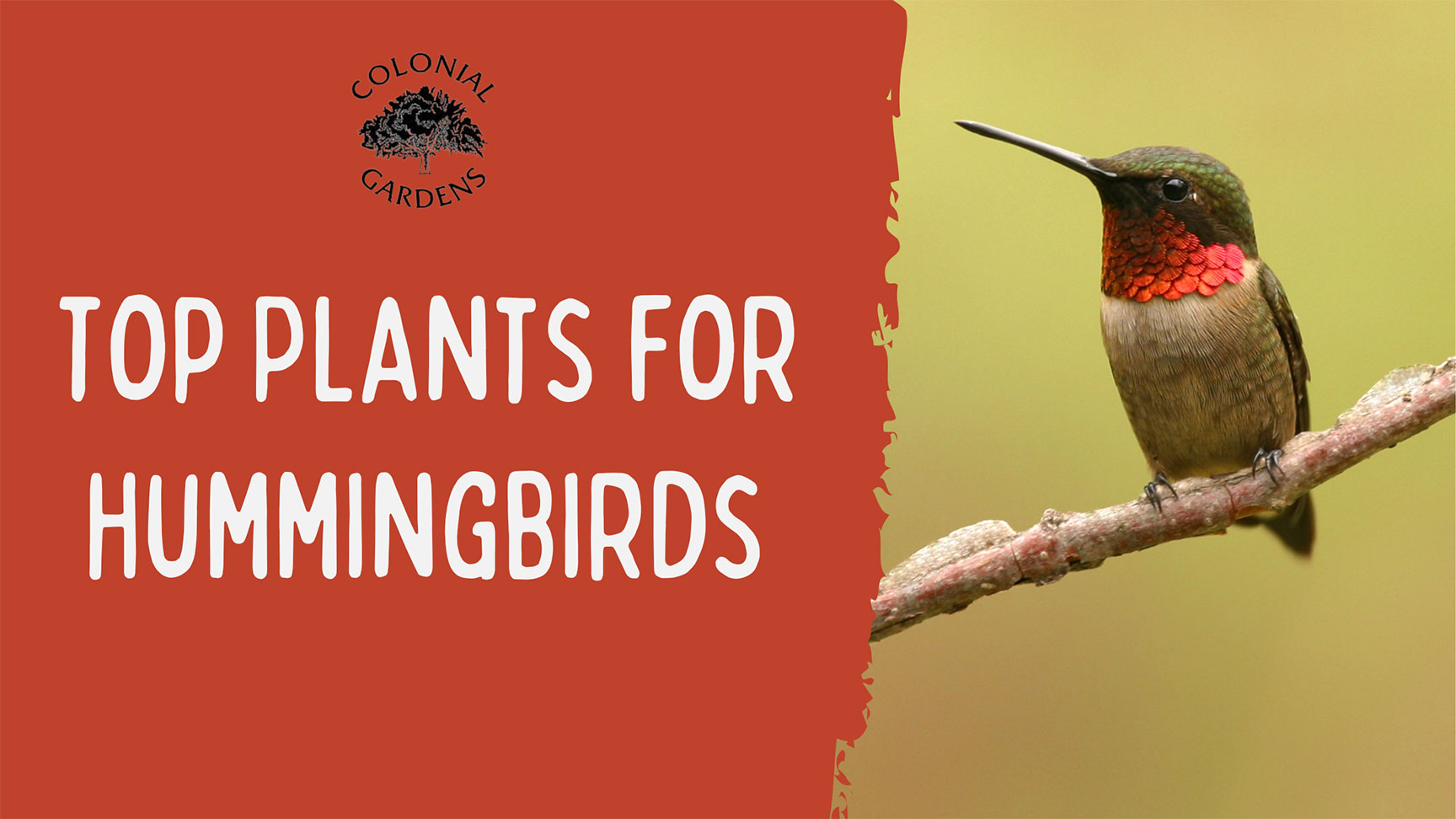
There’s nothing quite like a hummingbird zipping through the garden. There are hundreds of species of hummingbirds, but only one is regularly found east of the Mississippi River: the ruby-throated hummingbird. This tiny jewel of a bird migrates into our area in southeastern Pennsylvania around mid-April to early May and hangs around until September.
Here at Colonial, we carry a wide variety of hummingbird feeders, but the best way to attract and feed hummingbirds is by providing them their natural source of nectar: plants!
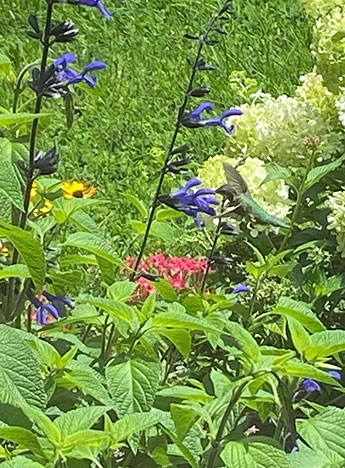
Hummingbirds are important pollinators for several species of native plants. They use their long beak and tongue to access nectar from tube shaped flowers. It’s important to plant a variety of these types of plants in your garden to help provide food for hummingbirds throughout the summer. Female hummingbirds in particular often return to their previous nest sites year after year.
Hummingbird Fun Facts:
- Male ruby-throated hummingbirds have a bright red patch on their throat, whereas females have more muted colors.
- Ruby-throated hummingbirds also eat mosquitoes and other insects, not just nectar!
- Female hummingbirds build nests in the branches of trees. If you have no appropriate nesting trees nearby, you might have visiting hummingbirds, but might not get resident hummingbirds.
Our Top Plant Choices:
Annual Salvia: There’s no doubt that providing a variety of primarily native plants is an essential part of a hummingbird garden. That being said, the hummingbirds that visit our store head straight for the salvia in the annual house. These vibrant plants sport stalks of tubular flowers that the hummingbirds cannot get enough of. Depending on the variety, salvia can grow to be over 4 feet tall so give it some space in a container or a bed to fill out. You’ll likely be rewarded with a hummingbird visitor.
Eastern Columbine (Aquilegia): The arrival of male hummingbirds to our area seems to coincide with the bloom time of the eastern columbine. This spring bloomer likely provides essential energy for the male hummingbirds as they establish territories and wait for the arrival of the females. Columbine likes shady conditions. While it is native and hardy in our area, the plant itself is short-lived and returns by reseeding itself for the next season.
Cardinal Flowers (Lobelia): This flower gets its name from another bird, but that’s for the bright red color of its flowers. The true friend of the cardinal flower is the hummingbird. This native plant thrives in part-sun conditions. Like many native plants, it prefers lean soils and may become floppy.

BeeBalm (Monarda): From a distance, the flowers of the beebalm, or wild bergamot, look like alien flowers. When you get closer, you’ll see that each “flower” is actually a collection of tube-shaped flowers. Beebalm does great in full sun. New varieties have been bred to be more compact and disease-resistant than the straight species. Whichever way you go, be aware that beebalm spreads. This native plant throws rhizomes out underground, quickly taking up unused space within the bed.
Hummingbird Mint (Agastache): The name says it all! This species is native to the southwestern US where many more species of hummingbirds reside. Hummingbird mint stays smaller than some of the other plants on this list. It likes full sun conditions and does not like to sit wet.
Trumpet Honeysuckle (Lonicera sempervirens): This native vine produces hundreds of coral-colored flowers, the perfect meal for an ever-hungry hummingbird. Honeysuckle is a vine and needs a support structure to thrive.
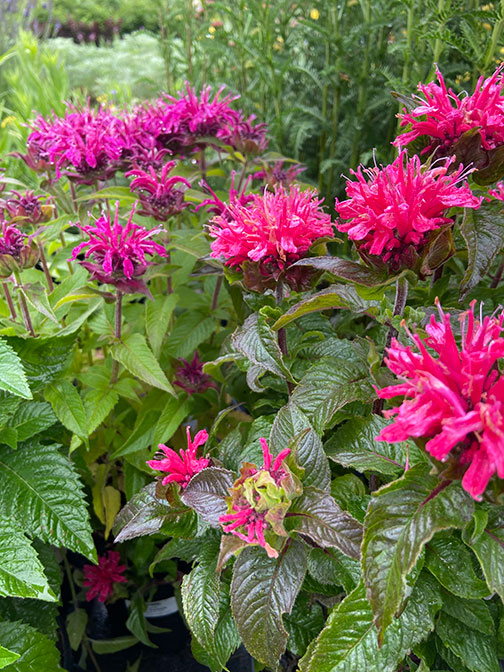
Blazing Star (Liatris): Also known as blazing star, this native meadow perennial blooms in the summer with tall spikes of bright purple blooms. Like the cardinal flower, it prefers lean soil as excessive nutrients can lead to floppy stalks. Liatris likes full sun locations.
Other Options: Woodland Phlox, Geraniums, Garden Phlox, Turtlehead Lily, Delphinium, Penstemon
Other Essential Elements of a Hummingbird Garden:
- Keep Your Cats Inside: Cats are the number one cause of bird mortality outside of habitat loss. Even pet cats that are provided regular food still hunt local wildlife. Keep your cat indoors to protect our native birds, small mammals, reptiles, and amphibians.
- Avoid Pesticides: Ruby-Throated Hummingbirds also feed on insects. Keep the use of pesticides to a minimum to help protest the food source and health of these incredible birds.
- Nesting Site: Female ruby-throated hummingbirds construct nests in deciduous trees near their food sources. These nesting sites are best at forest edges or near water, but providing a native tree near your garden can help provide a place for these amazing animals to breed.
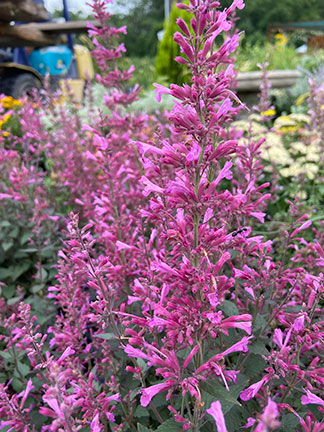

Using your garden to create habitat for wildlife is gardening for the greater good. Whether you have containers on a balcony or a plot of land, you can contribute to saving local species. On top of that, it’s a joy to see wildlife up close! So plant for hummingbirds and make sure to keep an eye out for these special birds.
Colonial Gardens is an independent garden center located in Phoenixville in Chester County, Pennsylvania since 1967. We carry one of the widest selection of annuals, perennials, trees and shrubs, and food gardening crops in Southeastern Pennsylvania. We offer professional landscaping services and a full-service florist. Visit our greenhouse for unique houseplants and our gift shop for gifts and garden accessories. In the fall and winter, join us for our family-friendly seasonal events and Christmas shop.
